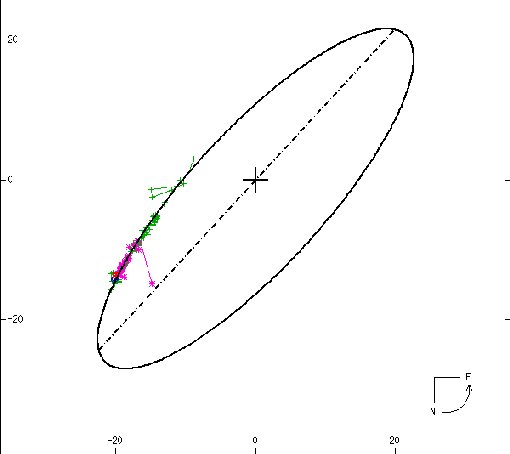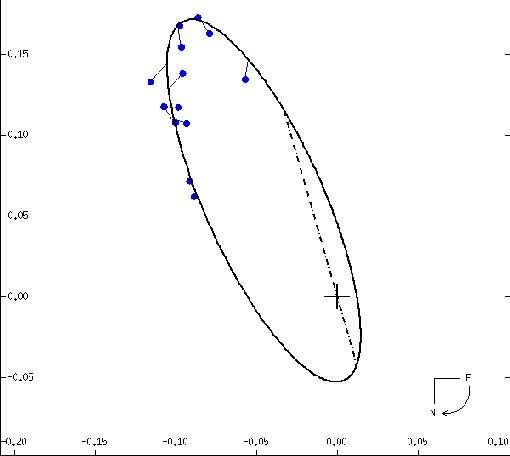

 |
 |
| The scales of the two orbits are in seconds of arc. At left, KX Librae B (actually BC) orbits KX Librae A. A fitted orbital path leads to a period of 2130 years at an average separation (dependent on distance) of 189 Astronomical Units. They were closest together in the year 1689. A tilt of 72 degrees to the plane of the sky distorts the orbit and places "A" off the apparent focus of the ellipse. In reality, the two (BC and A) are in mutual orbit around a center of mass that lies between them. At right, we see KX Librae C going around KX-B in an orbit of just 0.8457 years, the two separated on average by just 0.88 AU but with a huge swing of 0.2 to 1.5 AU apart. A tilt of 71 degrees again distorts the orbit from what one would see were it face-on. Curiously, though the tilts are about the same, they are opposite each other and the directions of the orbits are reversed. (From the Sixth Catalog of Orbits of Visual Binary Stars, W. I. Hartkopf and B. D. Mason, U. S, Naval Observatory.) | |